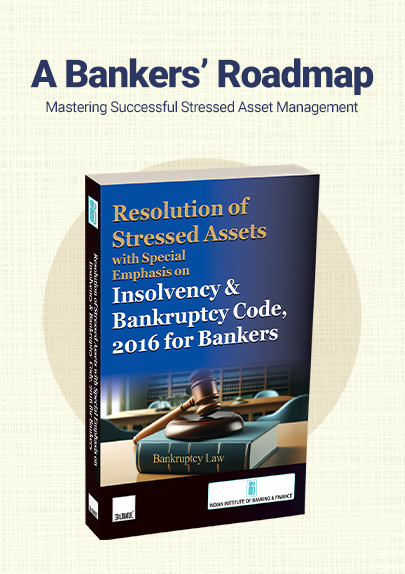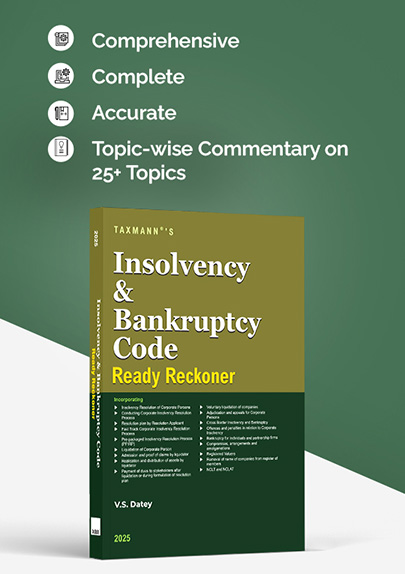Taxmann’s Analysis | Making Algo Trading Safer & Accessible for Retail Investors
- Blog|Advisory|Company Law|
- 8 Min Read
- By Taxmann
- |
- Last Updated on 20 February, 2025
SEBI's Algorithmic Trading (Algo Trading) Framework is a regulatory structure designed to govern the participation of retail investors in automated trading. It aims to ensure transparency, accountability, and investor protection by introducing guidelines that regulate the use of trading algorithms, broker responsibilities, and risk controls. This framework mandates that retail investors can only access approved and registered trading algorithms through SEBI-registered brokers, preventing unauthorised or unregulated algo trading. It also categorises algorithms into White Box (transparent and replicable) and Black Box (proprietary and non-replicable) to ensure proper oversight.
Table of Contents
- Introduction
- SEBI’s Rationale Behind Introducing Framework for Retail Investors
- What is the Meaning of ‘Algorithmic Trading’?
- Extant Provisions on ‘Algorithmic Trading’
- Primary Parties Affected by ‘Algorithmic Trading’
- SEBI’s Proposed Framework for ‘Algorithmic Trading’
- Various Opportunities for Retail Investors in Algorithmic Trading
- Risks and Concerns Associated with Algorithmic Trading
- Timeline for Implementation of Framework
- Conclusion
1. Introduction
In the fast-paced world of stock trading, milliseconds can mean the difference between profit and loss. Are you keeping up?
Imagine if your trades could be executed automatically at lightning speed, driven purely by data and optimised for the best possible outcomes. For years, algorithmic trading powered by advanced computer programs has been the secret weapon of institutional investors, giving them an edge in speed, accuracy and efficiency. However, retail investors have largely been left out of this revolution, unable to access the same advanced tools.
SEBI is now changing the landscape with a new regulatory framework designed to bring algo trading within the reach of retail investors safely and transparently. To strengthen these safeguards, SEBI has proposed a framework enabling retail investors to participate in algo trading through brokers safely[1]. Under this framework, retail investors will only have access to approved algorithms from registered brokers, ensuring their interests are protected.
This move is designed to make algorithmic trading more accessible and secure for retail investors. SEBI’s framework lays out clear guidelines, with built-in safeguards and accountability, ensuring that retail investors can embrace the power of automated trading with confidence. By ensuring that only trusted brokers are involved, SEBI is opening the door to a smarter and safer trading experience for investors.
2. SEBI’s Rationale Behind Introducing Framework for Retail Investors
SEBI introduced Algorithmic Trading (algo trading) through the Direct Market Access (DMA) Facility in 2008, which provided significant advantages such as faster order execution, reduced transaction costs, greater transparency, better audit trails and improved liquidity.
However, access to these facilities has been limited to institutional investors, such as hedge funds, mutual funds, pension funds, and insurance companies. For retail investors, algo trading holds immense potential. It allows for automated decision-making, eliminating emotional biases often associated with manual trading. Despite its advantages, the adoption of algo trading among retail participants in India has been limited.
The evolving nature of algo trading, particularly with the increasing demand for algo trading by retail investors, has necessitated a further review and refinement of the regulatory framework so that retail investors can also participate in algo trading with proper checks and balances.
Accordingly, SEBI has undertaken extensive consultations with relevant stakeholders, including the Intermediary Advisory Committee and Brokers Industry Standards Forum, to extend the existing regulatory framework with additional safeguards to facilitate retail investors’ participation in algo trading.
3. What is the Meaning of ‘Algorithmic Trading’?
‘Algorithmic Trading’, often referred to as algo trading, uses computer programs to execute trades based on predefined parameters such as price, volume and timing. This technology-driven approach has transformed the global financial markets by enhancing speed, precision and efficiency in trading operations.
Any order that is generated using automated execution logic must be known as algorithmic trading[2].
4. Extant Provisions on ‘Algorithmic Trading’
Currently, mechanisms such as the Direct Market Access (DMA) facility enable institutional investors to trade through Algorithms. However, there are no laws surrounding algorithm trading for retail investors in India yet. Without specific regulations, retail investors engaging in algorithm trading may lack proper safeguards and protections.
On March 30, 2012, SEBI issued broad guidelines on Algorithmic Trading in the securities market. Then, on December 9, 2021, SEBI issued a consultation paper on ‘Algorithmic Trading by Retail Investors’ seeking feedback on allowing retail investors to participate in algorithmic trading, with a focus on enabling algo facilities with the necessary safeguards.
5. Primary Parties Affected by ‘Algorithmic Trading’
The primary parties affected by ‘Algorithmic Trading’ are as follows –
- Brokers – These are the primary entities that execute trades on behalf of clients using algorithmic trading systems. They are responsible for implementing and managing the algorithms that drive trade execution.
- Stock Exchanges – Stock exchanges, where trades occur, play a crucial role in facilitating and regulating algorithmic trading activities. They must ensure their systems can handle the high-speed and high-volume transactions generated by algorithms.
- Institutional Investors – Large entities like hedge funds, mutual funds, and pension funds are primary users of algorithmic trading to execute large orders with minimal market impact and optimise trading strategies.
- Algorithmic Trading Providers (Algo Providers) – These entities develop and supply trading algorithms, and strategies to brokers, institutional investors and traders. They are responsible for ensuring compliance with regulatory requirements, managing risk controls, and adapting to market changes to maintain efficiency and reliability in trade execution.
6. SEBI’s Proposed Framework for ‘Algorithmic Trading’
SEBI has outlined a comprehensive framework to make algorithmic trading more accessible and safer for retail investors. This initiative aims to overcome the limitations of the existing current system, which has long favoured institutional investors, by introducing measures that promote transparency, accountability and fairness in algo trading practices. The proposed framework is as below:
6.1 Use of Application Programming Interface (API) for Algo trading
Brokers must act as the principal in providing algo trading through APIs[3], with the algo provider serving as its agent when using the API provided by the broker. All algo orders originating/flowing through APIs extended by brokers to algo providers, must be tagged with a unique identifier provided by the Stock Exchange.
Further, Algos developed by tech-savvy retail investors, using their programming knowledge must also be registered with the Exchange, through their broker, only if they cross the specified order per second threshold. The same registered Algo must be permitted for use by retail investors for their family members. Also, brokers must authenticate access to API via two-factor authentication and must support only open authentication[4].
6.2 Categorisation of Algorithms
Algos must be categorised into two categories –
- White Box Algos – Algos where the logic is disclosed and replicable. These are fully transparent, allowing investors to understand the trading logic and decision-making process
- Black Box Algos – Algos where the logic is not known to the user and is not replicable. These require additional scrutiny and regulatory oversight. Further, SEBI emphasised that the algo provider must register as a research analyst and maintain a detailed research report for each algo.
6.3 Roles & Responsibilities of Stock Brokers
The broker can provide facility of algo trading only after obtaining permission from the stock exchange for each algo. All algo orders must be tagged with a unique identifier provided by the Exchange to establish an audit trail. Further, brokers must be solely responsible for handling investor grievances related to algo trading and monitoring of APIs for prohibited activities.
6.4 Roles & Responsibilities of Exchanges
Exchanges must be responsible for supervising algorithmic trading while ensuring the following –
- Putting in place a comprehensive Standard Operating Procedure (SOP) for testing of algos
- Defining the roles and responsibilities of brokers
- Defining the roles, criteria and process of empanelment of algo providers
- Reatining the ability to use the kill switch[5] for orders generated from a particular algo ID
- Conducting surveillance on all algo orders and monitoring their behaviour at all times including simulation testing of all algos
Further, exchanges must supervise that brokers have the ability to distinguish between algo and non-algo orders. Exchanges must also specify the turnaround time (TAT) for registering certain type of algos on a normal basis.
6.5 Empanelment and Registration of Algo Providers
Any algo provider providing the facility to place algo orders with brokers through an API, must require to be empanelled with exchanges. Exchanges must specify the empanelment criteria for the algo providers. Further, the broker must do the necessary due diligence before onboarding an empanelled algo provider on its platform.
Also, algo providers and brokers may share the subscription charges and brokerage collected from the client. However, prominent and complete disclosures of all the charges must be made to the client.
7. Various Opportunities for Retail Investors in Algorithmic Trading
SEBI’s proposed framework for algorithmic trading opens up numerous opportunities for retail investors, making algo trading more accessible, efficient and secure. The various opportunities for retail investors are as follows –
- Increased Accessibility to Algo Trading – Retail investors now have greater access to algo trading, which was previously more suited for large financial players. With API-based execution and clear guidelines, automated trading is becoming more approachable and user-friendly for individual traders.
- Enhanced Trading Accuracy and Efficiency – Algorithmic trading allows orders to be executed quickly with minimal delays, helping retail investors avoid unexpected price changes before their trade is completed. This makes trading more reliable and helps them instantly take advantage of market opportunities.
- Fairer and More Transparent Market Participation – The mandatory classification of algos into white box and black box ensures transparency, allowing retail investors to make more informed choices when using third-party algos.
- Better Risk Management and Regulatory Protection—Brokers are accountable for algo trading oversight and investor grievance handling, which benefits retail traders by providing a safer trading environment and reducing their exposure to fraudulent practices.
- Greater Control Over Trading Strategies – Retail investors with programming knowledge can design and deploy their own trading algorithms, allowing them to customise strategies to their risk level, market trends and past data.
8. Risks and Concerns Associated with Algorithmic Trading
Though SEBI’s proposed framework aims to make algo trading more accessible and safer for retail investors, certain risks and concerns still remain, as outlined below –
- Technical and Execution Risks – Algo trading relies on technology, which can face issues like software glitches, connectivity failures, or execution delays, leading to unexpected losses.
- Dependency on Brokers and Algo Providers – Retail investors depend on brokers and third-party algo providers to access algorithms. Any lapse in compliance could expose investors to vulnerabilities.
- Market Volatility – High-speed algo trading can contribute to sudden price swings, increasing the risk of sharp market movements that may adversely impact retail traders.
- Misuse of Black Box Algos – Black box algos do not disclose their logic, making it difficult for retail investors to assess risks and understand the basis of trading decisions.
- Limited Grievance Redressal Knowledge – While SEBI emphasises the importance of grievance mechanisms, many retail investors may lack the necessary awareness or understanding to navigate these systems effectively, limiting their ability to resolve disputes quickly.
9. Timeline for Implementation of Framework
The implementation standards shall be formulated by the Broker’s Industry Standards Forum by April 1, 2025, under the guidance of the stock exchanges and in consultation with the SEBI. The provisions will be applicable from August 1, 2025.
10. Conclusion
SEBI’s proposed framework for algorithmic trading marks a significant step towards democratising access to advanced trading technologies for retail investors while ensuring proper safeguards. By establishing a structured regulatory environment, SEBI aims to enhance transparency, accountability, and investor protection in algo trading. The framework provides clear roles and responsibilities for brokers, exchanges and algo providers, ensuring that retail investors can participate with adequate safeguards against risks such as technical failures, market volatility and security threats. With increased accessibility, better risk management and improved execution efficiency, retail investors stand to benefit significantly from this initiative.
However, challenges remain, particularly concerning black box algos, execution risks and dependency on brokers and algo providers. This move, nevertheless, aims to balance innovation with investor protection, addressing risks while supporting growth in a technology-driven trading landscape. As SEBI’s algo trading framework evolves, it promises to transform algorithmic trading in India, creating a dynamic and inclusive market ecosystem.
[1] Circular no. SEBI/HO/MIRSD/MIRSD-PoD/P/CIR/2025/0000013; dated: 04.02.2025
[2] Circular no. CIR/MRD/DP/09/2012 dated 30.03.2012
[3] An API is a set of rules and protocols that allows different software applications to communicate and exchange data with each other
[4] A secure authorization framework that allows third-party applications to access user data without requiring users to share their login credentials or other sensitive information
[5] The kill switch is an emergency function and the last level of defence against any algorithm malfunction.
Disclaimer: The content/information published on the website is only for general information of the user and shall not be construed as legal advice. While the Taxmann has exercised reasonable efforts to ensure the veracity of information/content published, Taxmann shall be under no liability in any manner whatsoever for incorrect information, if any.

Taxmann Publications has a dedicated in-house Research & Editorial Team. This team consists of a team of Chartered Accountants, Company Secretaries, and Lawyers. This team works under the guidance and supervision of editor-in-chief Mr Rakesh Bhargava.
The Research and Editorial Team is responsible for developing reliable and accurate content for the readers. The team follows the six-sigma approach to achieve the benchmark of zero error in its publications and research platforms. The team ensures that the following publication guidelines are thoroughly followed while developing the content:
- The statutory material is obtained only from the authorized and reliable sources
- All the latest developments in the judicial and legislative fields are covered
- Prepare the analytical write-ups on current, controversial, and important issues to help the readers to understand the concept and its implications
- Every content published by Taxmann is complete, accurate and lucid
- All evidence-based statements are supported with proper reference to Section, Circular No., Notification No. or citations
- The golden rules of grammar, style and consistency are thoroughly followed
- Font and size that’s easy to read and remain consistent across all imprint and digital publications are applied







 CA | CS | CMA
CA | CS | CMA


